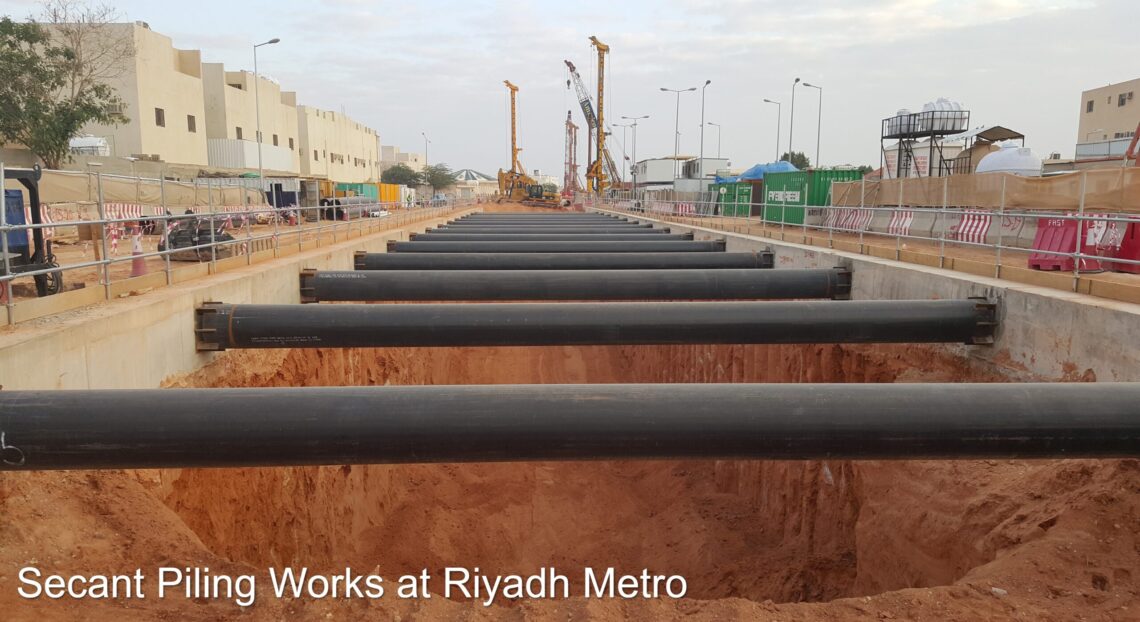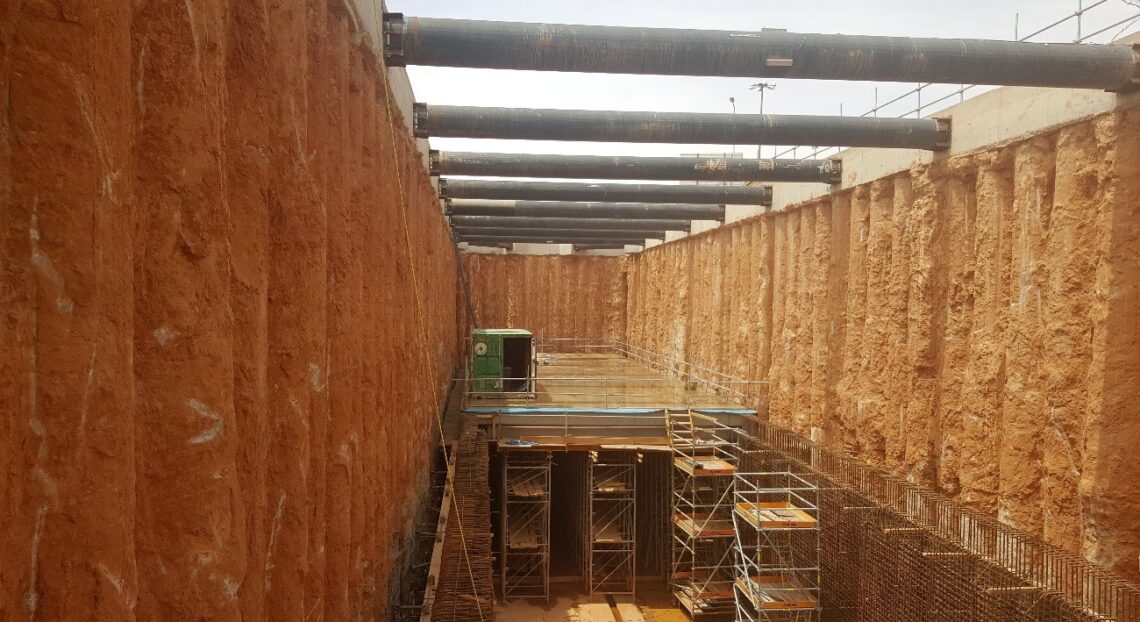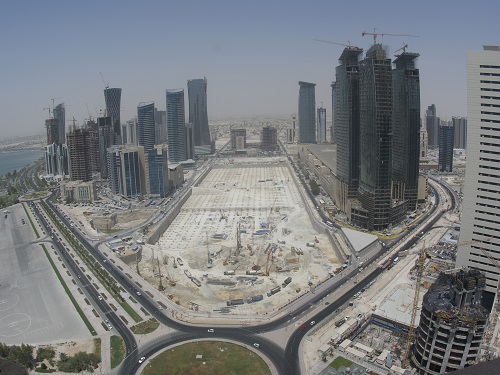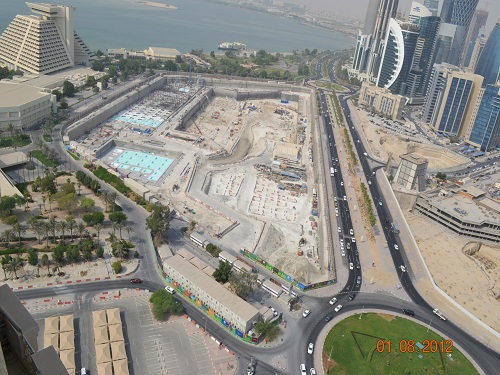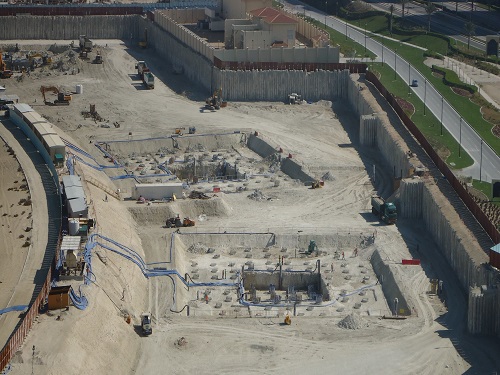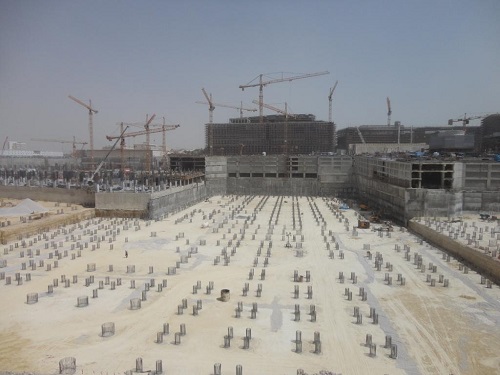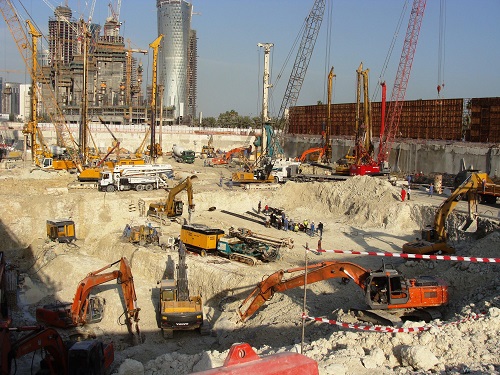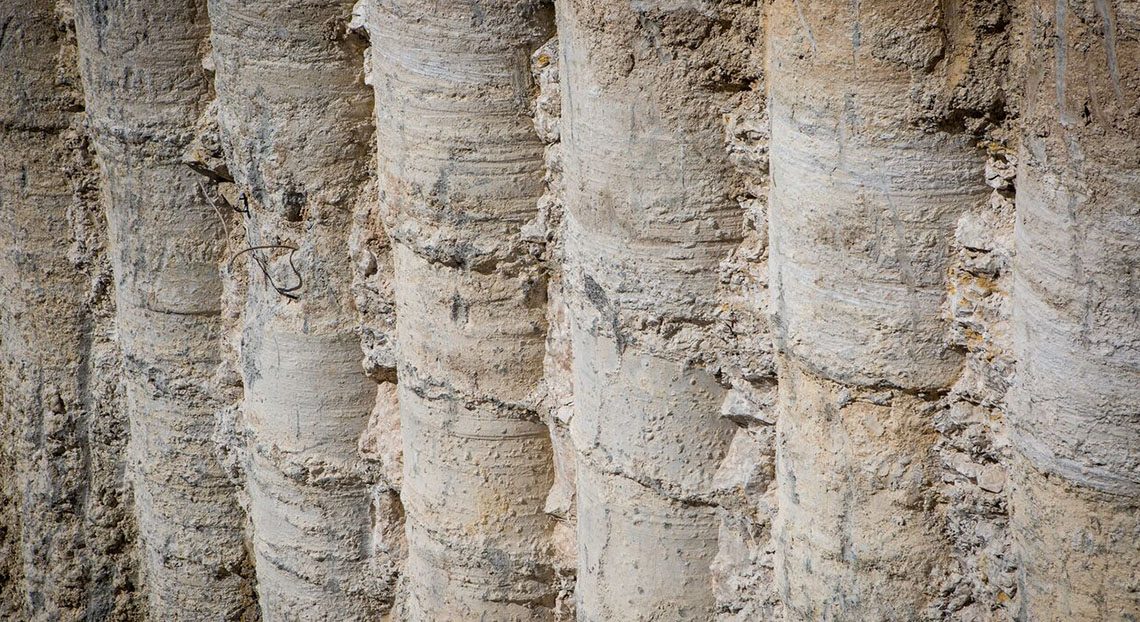
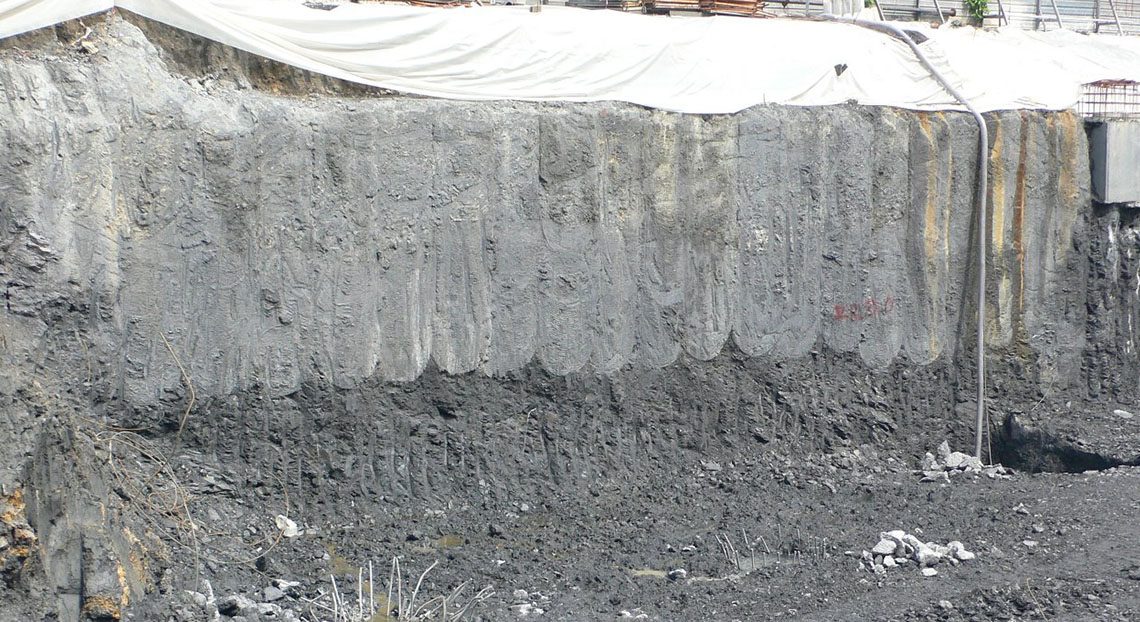
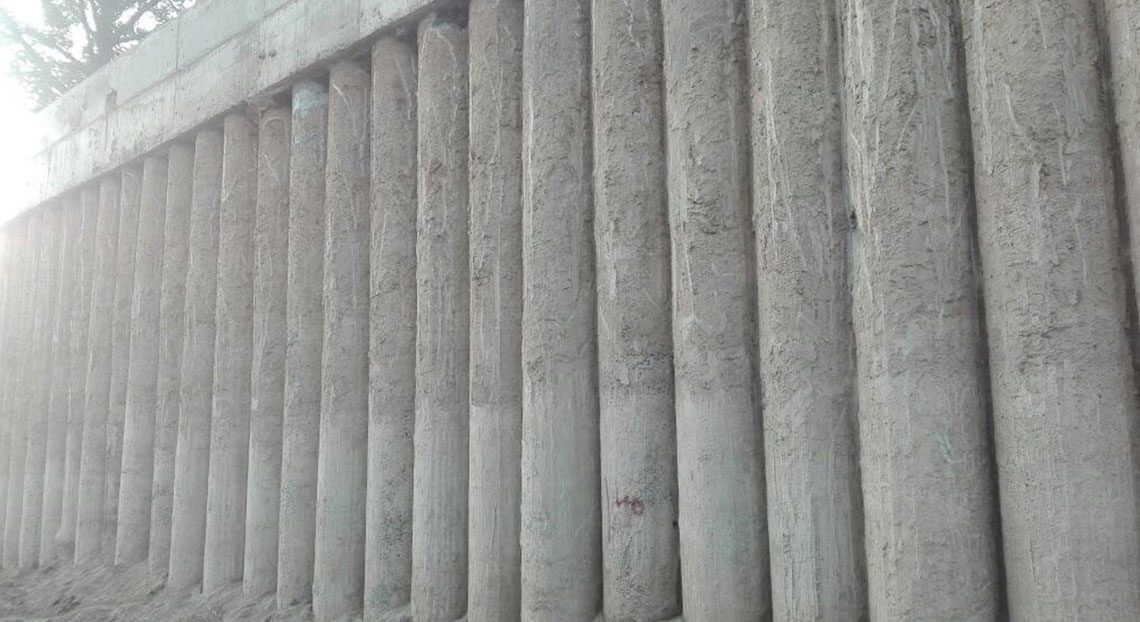

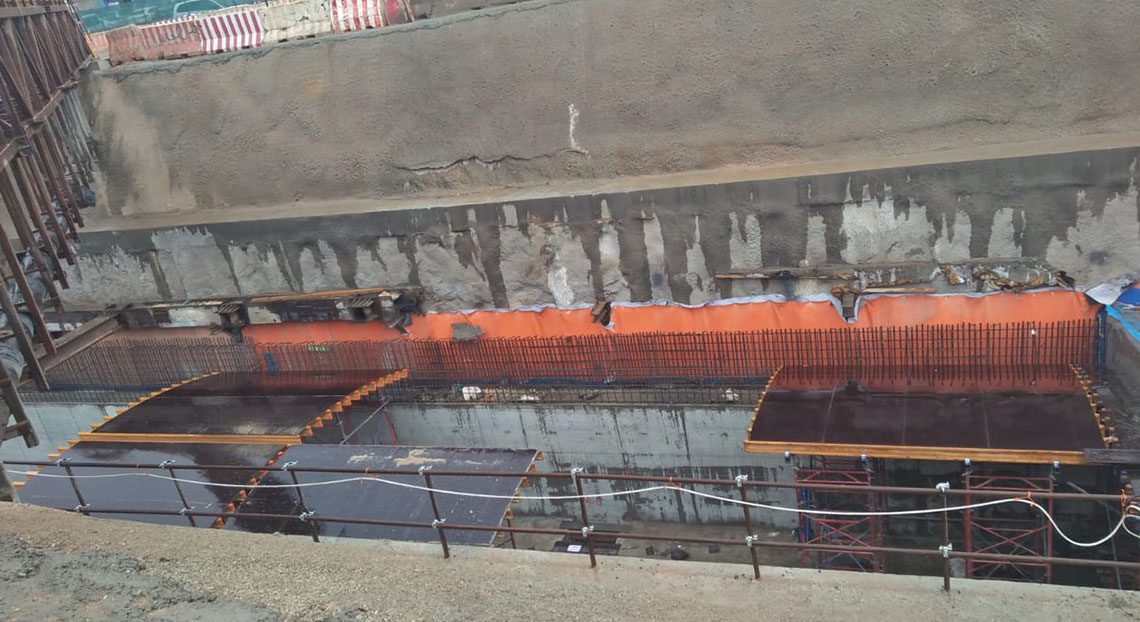

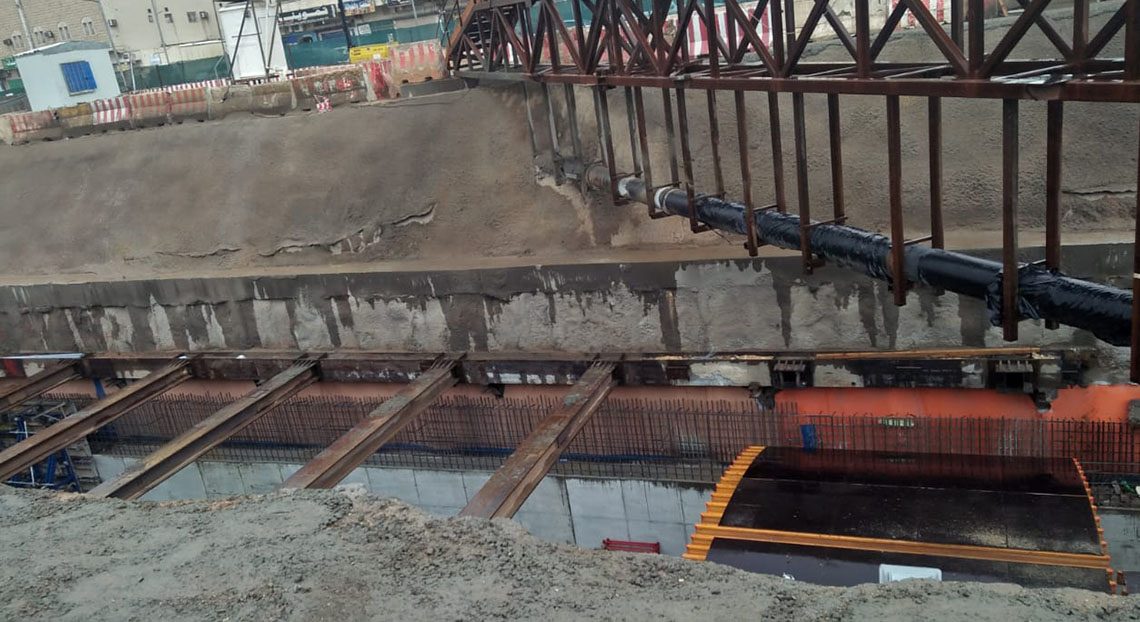

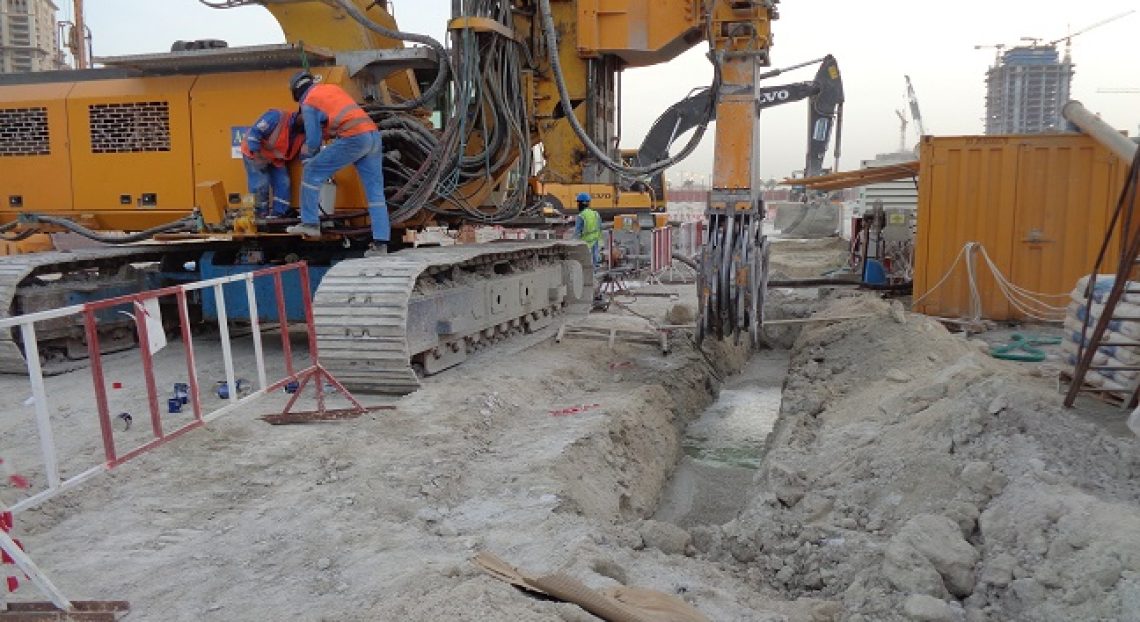

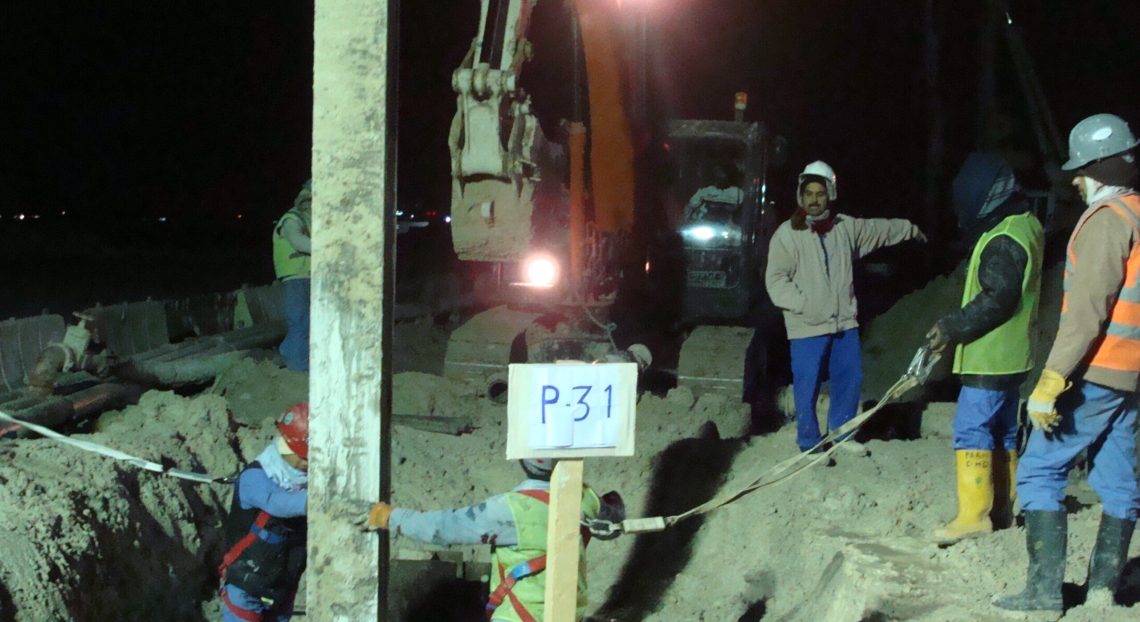
Ammico has extensive experience in providing various other economical/value engineered shoring solutions suited to the project conditions such as depth of excavation, soil conditions, ground water level and proximity of nearby structures and underground utilities.
A secant pile wall consists of overlapping (secant) piles to serve for both earth retention and water cut-off. It is most suitable solution for area having high water table and maximum depths up to 15 m.
Contiguous piled walls consist of a row of successive unconnected cast-in-situ concrete piles constructed with small gaps between the adjacent piles. Contiguous pile walls are a more simple and economical supporting system for medium scale excavation depths, where ground water ingress is not a concern.
Concrete soldier piles are like steel soldier piles except that the shoring piles comprise of bored cast-in-situ concrete piles instead of structural steel beams. Due to their higher stiffness vis-à-vis steel soldier piles, the concrete soldier piles result in lesser ground movement.
In stable grounds e.g., soft rocks, shotcrete may be used rather than concrete panels or wooden lagging between the concrete soldier piles to provide a plain and stable surface.
Steel soldier piles comprise of structural steel beams or double channels directly hammered into the ground using hydraulic vibratory hammers or installed into drilled pile boreholes and concreted from toe level to excavation level. During excavation, concrete planks or wooden lagging are inserted in the space between adjacent soldier piles. This shoring system is effective for shallow excavation depths up to 6 m. This shoring system is not watertight & shall not be used in areas having high ground water table.
For earth retention of soft soils where the shoring is also required to act as a cut-off against lateral inflow of ground water, CSM can be an effective solution. Rectangular panels are drilled using CSM rig, cement-bentonite slurry is pumped through the CSM rig shaft during drilling itself to be mixed with the in-situ soil. The rotary motion of the cutting wheels aid to both penetration into the soil as well as mixing of the in-situ soil with the slurry.
When the CSM cutter wheels reach the required toe level, the CSM frame is withdrawn from the panel and a structural steel beam is lowered into place with a vibratory hammer. As the soil-slurry mix sets and gains strength, the structural steel beam gets grouted in position and transforms into a soldier pile capable of carrying the required lateral loads.
In case of only water cut off requirement, CSM can be used without soldier beams to provide a cost-effective water barrier.
Soil nailing is a ground stabilisation technique that can be used on either natural or excavated slopes. Soil nailing uses grouted, tension-resisting steel elements (nails) to reinforce in situ soils and create a gravity retaining wall for permanent or temporary excavation support.
Rock bolts are a type of drilled soil nail or anchor used when the ground to be stabilized consists mostly of rock materials. They are used routinely for stabilizing roadcuts, rock cliffs, steep slopes, bridge abutments, and reinforced concrete dams to avoid localised failures in case of weak rock formations. Shotcrete is frequently used, with rock bolts as support for cut slopes and in tunnels.
Some Of Our Major Projects


